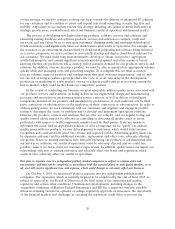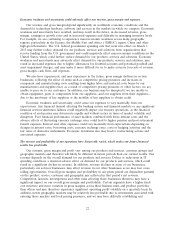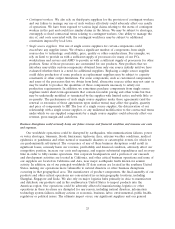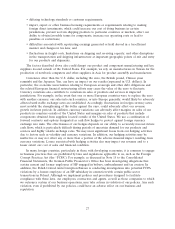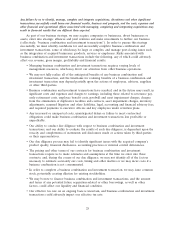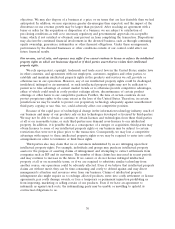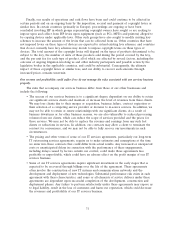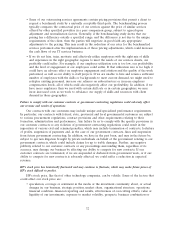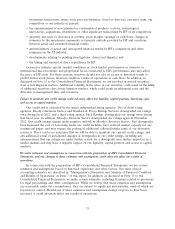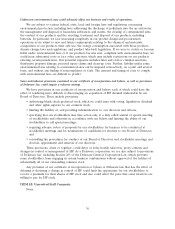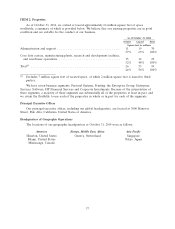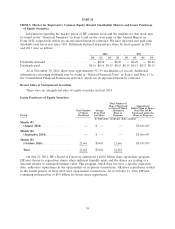HP 2014 Annual Report Download - page 37
Download and view the complete annual report
Please find page 37 of the 2014 HP annual report below. You can navigate through the pages in the report by either clicking on the pages listed below, or by using the keyword search tool below to find specific information within the annual report.• An announced business combination and investment transaction may not close timely or at all,
which may cause our financial results to differ from expectations in a given quarter.
• Business combination and investment transactions may lead to litigation.
• If we fail to identify and successfully complete and integrate business combination and
investment transactions that further our strategic objectives, we may be required to expend
resources to develop products, services and technology internally, which may put us at a
competitive disadvantage.
We have incurred and will incur additional depreciation and amortization expense over the useful
lives of certain assets acquired in connection with business combination and investment transactions,
and, to the extent that the value of goodwill or intangible assets acquired in connection with a business
combination and investment transaction becomes impaired, we may be required to incur additional
material charges relating to the impairment of those assets. For example, in our third fiscal quarter of
2012, we recorded an $8.0 billion impairment charge relating to the goodwill associated with our
enterprise services reporting unit within our former Services segment and a $1.2 billion impairment
charge as a result of an asset impairment analysis of the ‘‘Compaq’’ trade name acquired in 2002. In
addition, in our fourth fiscal quarter of 2012, we recorded an $8.8 billion impairment charge relating to
the goodwill and intangible assets associated with Autonomy. If there are future decreases in our stock
price or significant changes in the business climate or results of operations of our reporting units, we
may incur additional charges, which may include goodwill impairment or intangible asset charges.
Integration issues are often complex, time-consuming and expensive and, without proper planning
and implementation, could significantly disrupt our business and the acquired business. The challenges
involved in integration include:
• combining product and service offerings and entering or expanding into markets in which we are
not experienced or are developing expertise;
• convincing customers and distributors that the transaction will not diminish client service
standards or business focus, persuading customers and distributors to not defer purchasing
decisions or switch to other suppliers (which could result in our incurring additional obligations
in order to address customer uncertainty), minimizing sales force attrition and expanding and
coordinating sales, marketing and distribution efforts;
• consolidating and rationalizing corporate IT infrastructure, which may include multiple legacy
systems from various acquisitions and integrating software code and business processes;
• minimizing the diversion of management attention from ongoing business concerns;
• persuading employees that business cultures are compatible, maintaining employee morale and
retaining key employees, engaging with employee works councils representing an acquired
company’s non-U.S. employees, integrating employees into HP, correctly estimating employee
benefit costs and implementing restructuring programs;
• coordinating and combining administrative, manufacturing, research and development and other
operations, subsidiaries, facilities and relationships with third-parties in accordance with local
laws and other obligations while maintaining adequate standards, controls and procedures;
• achieving savings from supply chain integration; and
• managing integration issues shortly after or pending the completion of other independent
transactions.
While we do not currently plan to divest any of our major businesses, we do regularly evaluate the
potential disposition of assets and businesses that may no longer help us meet our objectives. When we
decide to sell assets or a business, we may encounter difficulty in finding buyers or alternative exit
strategies on acceptable terms in a timely manner, which could delay the achievement of our strategic
29



